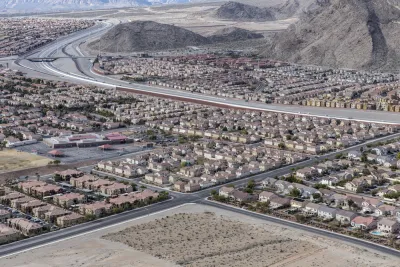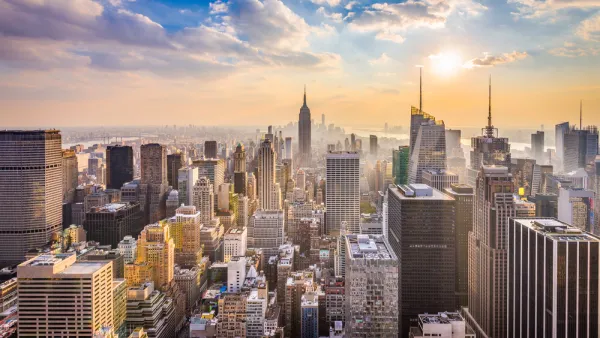In search of space and affordability, American families are increasingly moving to suburbs and exurbs.

Suburban sprawl is nothing new to U.S. cities, but, as we have noted repeatedly over the last two years, the pandemic has accelerated the dispersal of urban households to suburbs and exurbs and reduced Americans' appetite for public transit. But high rents in urban cores have been driving the trend since well before the pandemic. And, as Patrick Sisson writes, "with growth has come a familiar set of challenges, including traffic, environmental damage and city services that struggle to reach a spread-out population."
To meet rising demand for new homes, developers are building on undeveloped suburban fringes rather than urban infill properties with more difficult permitting processes. "Indeed, the ascendance of sprawl is a source of dismay for historic foes of this land- and energy-intensive development pattern, which bakes-in car-centric lifestyles and strains resources like water."
While some cities are enacting zoning reforms and pro-density policies to increase affordability and fight climate change, Sisson says "those factors are not nearly enough to offset the magnetic pull of cheap land." While local leaders embrace walkability and density as goals, many households are still forced to seek affordability outside central cities. Meanwhile, build-to-rent developers are capitalizing on the need from people who can't afford homeownership but want the space and amenities offered by single-family homes.
FULL STORY: How the Pandemic Supercharged Sprawl

National Parks Layoffs Will Cause Communities to Lose Billions
Thousands of essential park workers were laid off this week, just before the busy spring break season.

Retro-silient?: America’s First “Eco-burb,” The Woodlands Turns 50
A master-planned community north of Houston offers lessons on green infrastructure and resilient design, but falls short of its founder’s lofty affordability and walkability goals.

Delivering for America Plan Will Downgrade Mail Service in at Least 49.5 Percent of Zip Codes
Republican and Democrat lawmakers criticize the plan for its disproportionate negative impact on rural communities.

Test News Post 1
This is a summary

Test News Headline 46
Test for the image on the front page.

Balancing Bombs and Butterflies: How the National Guard Protects a Rare Species
The National Guard at Fort Indiantown Gap uses GIS technology and land management strategies to balance military training with conservation efforts, ensuring the survival of the rare eastern regal fritillary butterfly.
Urban Design for Planners 1: Software Tools
This six-course series explores essential urban design concepts using open source software and equips planners with the tools they need to participate fully in the urban design process.
Planning for Universal Design
Learn the tools for implementing Universal Design in planning regulations.
EMC Planning Group, Inc.
Planetizen
Planetizen
Mpact (formerly Rail~Volution)
Great Falls Development Authority, Inc.
HUDs Office of Policy Development and Research
NYU Wagner Graduate School of Public Service





























